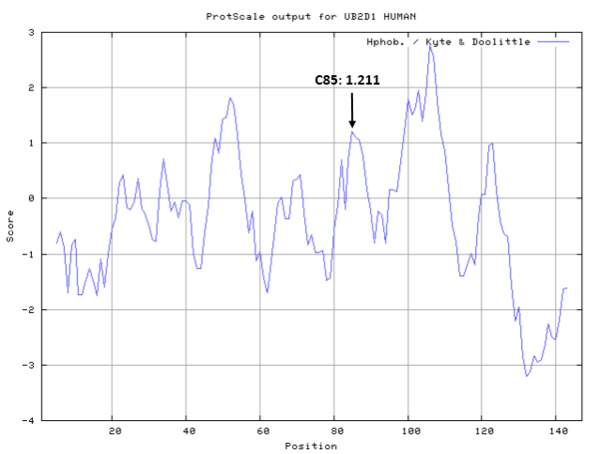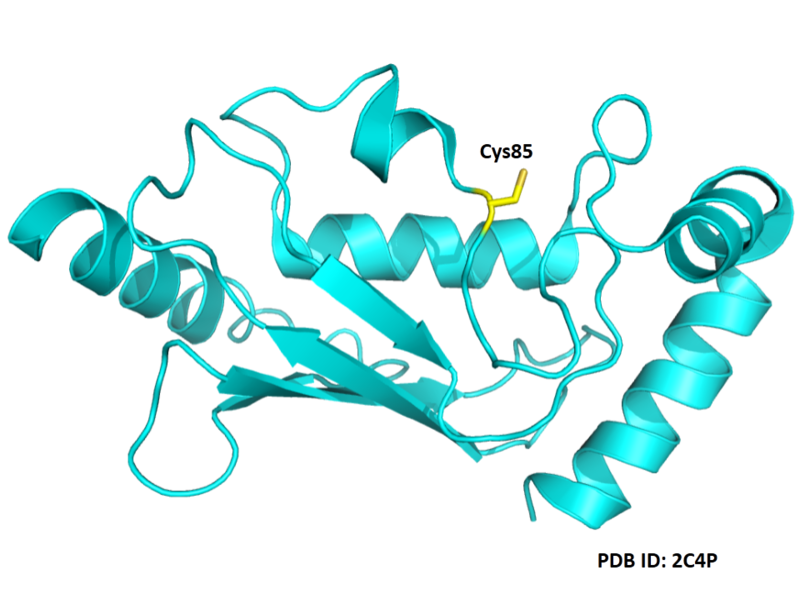Ubiquitin-conjugating enzyme E2 D1
| Basic Information | |
|---|---|
| Short Name | UBE2D1 |
| UNP ID | P51668 |
| Organism | Homo sapiens |
| Cys Site | Cys85 |
| Family/Domain | Ubiquitin-conjugating enzyme family |
| Known Ligand | Ligand list |
| Function Type | Post-translational Modification, Ubiquitinase/Deubiquitinase |
Summary
Protein Function
Ubiquitin-conjugating enzymes, also known as E2 enzymes and more rarely as ubiquitin-carrier enzymes, perform the second step in the ubiquitination reaction that targets a protein for degradation via the proteasome. The ubiquitination process covalently attaches ubiquitin, a short protein of 76 amino acids, to a lysine residue on the target protein. Once a protein has been tagged with one ubiquitin molecule, additional rounds of ubiquitination form a polyubiquitin chain that is recognized by the proteasome's 19S regulatory particle, triggering the ATP-dependent unfolding of the target protein that allows passage into the proteasome's 20S core particle, where proteases degrade the target into short peptide fragments for recycling by the cell.
UBE2D1 expressed in 230 organs, highest expression level in biceps brachii.
Cys Function & Property
Cys85 is the active site of UBE2D1, act as a glycyl thioester intermediate.
- Hydrophobic property:
- SASA:
- Cys85: 12.299 A^2
Protein Sequence
MALKRIQKEL SDLQRDPPAH CSAGPVGDDL FHWQATIMGP PDSAYQGGVF
FLTVHFPTDY PFKPPKIAFT TKIYHPNINS NGSICLDILR SQWSPALTVS
KVLLSICSLL CDPNPDDPLV PDIAQIYKSD KEKYNRHARE WTQKYAM
Structural Information
- Known structure with covalent ligand:
- Unknown
- Protein structure:
Related Pathway
Experimental Evidence
- LC-CID-MS/MS, Tryptic Digest
Reference
- Liu L, Hua Y, Wang D, et al. A sesquiterpene lactone from a medicinal herb inhibits proinflammatory activity of TNF-α by inhibiting ubiquitin-conjugating enzyme UbcH5[J]. Chemistry & biology, 2014, 21(10): 1341-1350. 25200604


